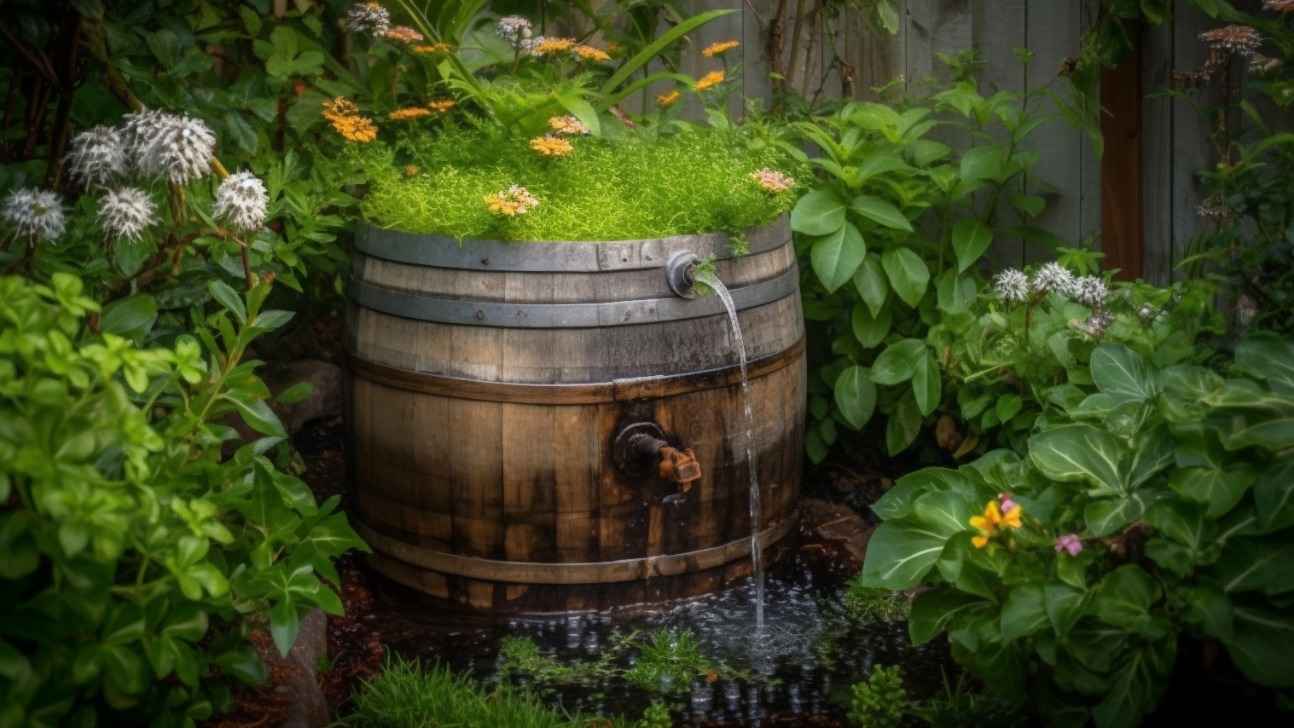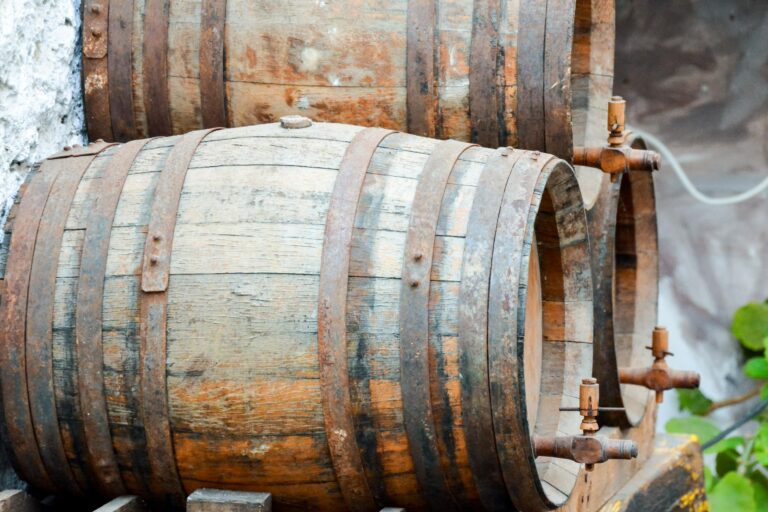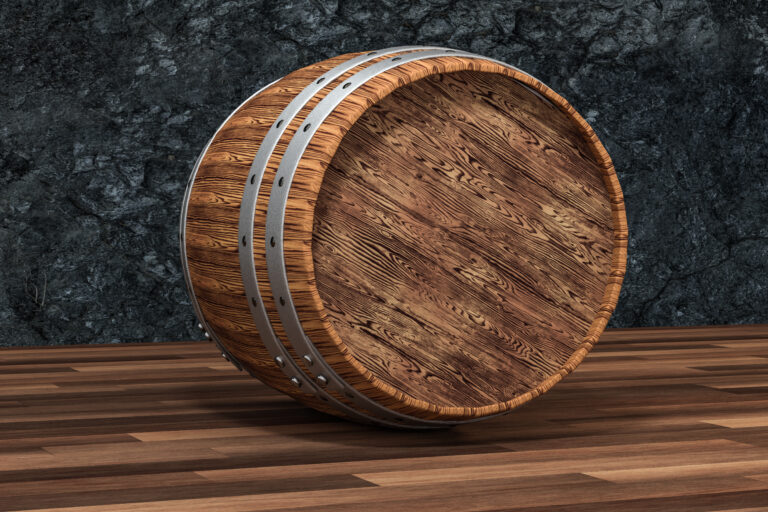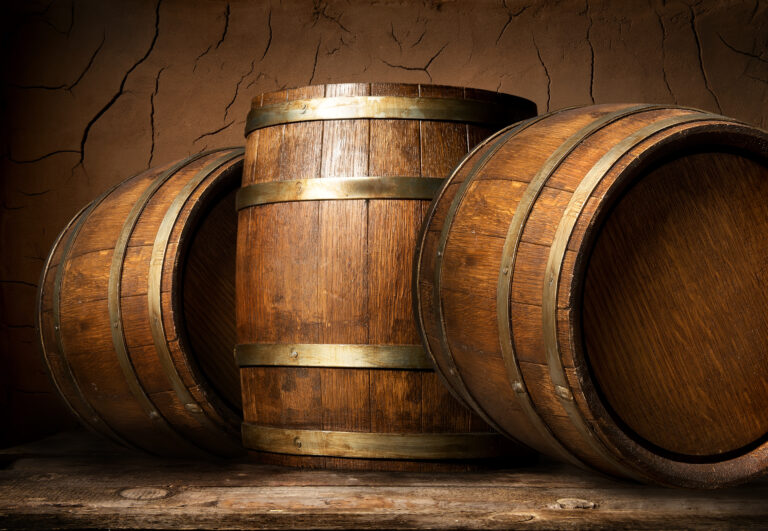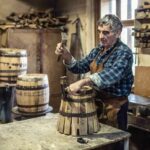So you’ve got an old whiskey barrel you want to turn into a planter, but you’re worried about drainage and rotting plants. Smart thinking. Barrels may look rustic and ready-made for planting, but without proper drainage and conditions, you’ll end up with a soggy mess of dead plants on your hands. The key is to create an environment inside the barrel that mimics what plants need to thrive – nutrients, air flow, and moisture control. With some simple modifications and the right mix of materials, your whiskey barrel planter can become a stunning container garden that will last for years. In this article, we’ll walk you through exactly what to put in a whiskey barrel planter to ensure happy, healthy plants and a gorgeous barrel display. Your garden center trips just got a whole lot more fun.
Introducing Whiskey Barrel Planters
Whiskey barrel planters are ideal for drainage and aeration. The porous wood allows for air flow while the shape helps excess water escape. For the best results, here are some tips for what to add at the bottom:
- Gravel: Add a few inches of small gravel, stones or pebbles at the bottom. This creates air pockets for drainage and prevents soil compaction.
- Charcoal: A layer of activated charcoal, especially horticultural charcoal, helps prevent root rot by absorbing excess moisture and odors. It also adds nutrients to the soil.
- Sand: A few inches of coarse sand or perlite creates an airy base for planters. The sand particles allow for drainage while still holding some moisture.
- Mesh: Place a mesh screen, landscaping fabric or cheesecloth over the holes in the bottom before adding other materials. This prevents the gravel and sand from falling out but still allows for drainage.
With the proper base materials that suit your climate and the plants’ needs, whiskey barrel planters can make a great home for shrubs, flowers, herbs and more. The natural wood esthetic is perfect for rustic or country garden styles. Now you have the know-how to get started!
The Importance of Drainage for Whiskey Barrel Planters
Drainage is key for whiskey barrel planters. Without proper drainage, your plants’ roots will rot from too much moisture.
To start, drill several holes in the bottom of the barrel, at least an inch in diameter and spaced a few inches apart. This allows excess water to escape easily. You’ll also want to elevate the barrel slightly, an inch or two off the ground. Some barrel stands or plant caddy dolly’s work great for this.
Next, fill the bottom of the barrel with a layer of gravel, stones, or something similar before adding potting soil. This creates air pockets for drainage and helps prevent root rot. As an alternative, you can line the bottom with landscape fabric before adding rocks and soil. The fabric will keep the soil from washing away while still allowing water to pass through.
Finally, choose plants that can tolerate some moisture but also require well-drained soil, such as lavender, petunias, marigolds or dwarf azaleas. And be careful not to overwater, especially at first. Check the soil in between waterings and don’t water again until the top few inches are dry.
With the proper setup and suitable plant choices, your whiskey barrel planter can thrive for years. The key is allowing excess water to drain freely so your plants’ roots get the moisture they need without drowning. By following these simple tips, you’ll have a stunning container garden to enjoy all season long.
Gravel as a Drainage Layer for Whiskey Barrel Planters
To provide proper drainage for your whiskey barrel planter, add a layer of gravel at the bottom. Gravel creates air pockets that allow excess water to seep out, preventing root rot.
Size of Gravel
For the best results, use gravel that is 1/4 inch to 1/2 inch in size. Gravel that is too fine won’t provide adequate drainage, while gravel that is too large won’t fit properly in the gaps and cracks of the barrel.
Depth of Gravel
Add 3 to 4 inches of gravel to the bottom of the barrel before adding potting soil. This will create a reservoir for excess water to collect before seeping out and provide airflow to the roots. Be sure to leave a few inches at the top for your potting mix and plants.
Potting Mix
Add a well-draining potting mix over the top of the gravel that is suitable for the plants you want to grow. The potting mix should be loose, airy and drain freely. An all-purpose mix amended with perlite or vermiculite works well for most plants.
Watering
When watering your whiskey barrel planter, pour water slowly until it starts to seep out the drainage holes at the bottom. This will saturate the entire potting mix and gravel layer. Never leave your barrel sitting in water, as it can lead to root rot even with the gravel drainage layer. Let the excess water drain fully after watering before placing the barrel back in its spot.
The key to a successful whiskey barrel planter is providing the right environment for your plants. Adding a layer of gravel for drainage, along with a well-draining potting mix and proper watering techniques will keep your plants happy and healthy all season long.
Other Inorganic Materials That Allow Drainage in Whiskey Barrels
Inorganic Materials
In addition to organic materials like gravel, stones and rocks are excellent for drainage in whiskey barrels.
- River rocks or pebbles – Smooth, water-worn rocks allow water to pass through easily while also adding decorative appeal. Their rounded shape prevents compaction.
- Crushed granite – Irregular, jagged pieces of crushed granite create air pockets and spaces for water to travel through. Granite chips also help weigh down the barrel to prevent tipping.
- Perlite – Lightweight, porous perlite beads absorb water and then release it slowly. They provide drainage without adding a lot of weight. Perlite is also pH neutral so it won’t affect the acidity of the soil.
- Pumice – Like perlite, pumice is a lightweight, porous rock that absorbs and releases water gradually. It creates air pockets in the soil and provides drainage and aeration for plant roots.
- Lava rock – The irregular, jagged surface of lava rock, or scoria, is ideal for drainage. The rocks stack in a way that allows water and air to pass through easily while still anchoring plants in place. Lava rock is also decorative and traps heat during the day to warm the soil.
Using a combination of 2 or more of these inorganic materials at the bottom of your whiskey barrel planter will ensure proper drainage for healthy plant growth. Be sure to also include activated charcoal to prevent stagnant water and a mesh liner or landscape fabric to keep the materials from mixing into the soil.
Organic Materials to Use for Drainage in a Whiskey Barrel Planter
Perlite is a volcanic rock that’s been heated and expanded. The tiny pebbles are lightweight but improve drainage and aeration.
Vermiculite is a mineral that expands when heated. The fine particles absorb and retain water, then release it slowly to the roots. Mix equal parts perlite and vermiculite for the perfect balance of moisture retention and drainage.
Coconut coir is made from coconut husks and helps loosen heavy clay soils. It’s a sustainable alternative to peat moss that resists compaction and improves drainage.
Pine needles, chopped leaves, straw, and bark chips are natural mulches that allow excess water to drain away from the roots while slowly releasing nutrients to the soil as they break down.
River rocks, gravel, and stones create air pockets in the bottom of the planter for the water to collect before seeping out drainage holes. The rocks also weigh down the planter to provide stability.
Compost and worm castings not only improve soil structure for better drainage and aeration, but they provide a slow-release source of nutrients to feed your plants all season long.
How Deep the Drainage Layer Should Be in a Whiskey Barrel
A layer of gravel, stones, or other drainage material in the bottom of the barrel will allow excess water to drain away from the soil and roots. This prevents root rot by keeping the roots from sitting in water. For a whiskey barrel planter, a 3- to 6-inch layer of gravel is typically adequate.
River rocks, pea gravel, and perlite are all great options for filling the bottom of the barrel. Avoid using pottery shards, as these can compact over time and reduce drainage. Perlite is a lightweight volcanic rock that is very porous, so it’s an excellent choice. Whatever material you use, make sure it’s washed first to remove any dirt or debris.
Place a mesh liner, screen, or landscape fabric over the drainage layer before adding soil. This prevents the soil from filtering down into the gravel. You can find these materials at most garden centers. Secure the liner to the sides of the barrel with staples, tacks, or strong tape.
Add your potting soil on top of the liner. For the best results, use a lightweight, porous potting mix instead of garden soil, which compacts easily and holds too much moisture. Aim for a mix that contains perlite, vermiculite, compost, and sand or peat moss. These provide drainage and aeration for healthy root growth.
With the proper drainage setup, you’ll have a thriving garden in your whiskey barrel planter for years to come. The key is allowing excess water to freely drain away while still retaining some moisture in the root zone. Get the balance right, and your plants will surely flourish.
Tips for Adding Drainage to an Existing Whiskey Barrel Planter
To ensure proper drainage in your whiskey barrel planter, here are some tips:
Add rocks
Place 2 to 3 inches of small rocks, gravel, or perlite in the bottom of the barrel before adding potting mix. This creates air space for excess water to collect so the roots don’t sit in soggy soil.
Drill extra holes
Use a drill to create several additional drainage holes in the bottom of the barrel. More holes mean more opportunities for water to escape, especially important for heavy rains.
Elevate the barrel
Place the barrel on pot feet, bricks, or a plant stand to elevate it slightly off the ground. This allows for air flow under the barrel and provides an exit route for excess water to drain away from the roots.
Avoid overwatering
Only water when the top few inches of potting mix are dry. Stick your finger in the soil to check moisture levels. Overwatering is the most common cause of root rot in container plants.
Repot if needed
If water seems to pool on the surface or leak from the drainage holes, it may indicate the potting mix has broken down and drainage has suffered. Gently remove the plant and repot it in fresh, well-draining potting mix.
Mulch (optional)
Adding a layer of mulch on top of the potting mix can help retain moisture in the soil. But for the best drainage, mulch is optional. If you do use it, leave space around the base of the plant uncovered.
Choosing the Right Soil Mix for Proper Drainage
Choosing a soil mix specifically designed for containers and planters is key for proper drainage and a healthy whiskey barrel planter. Standard potting mix won’t cut it. You need a loose, porous medium that drains well and still retains some moisture.
A good mix is:
- 1 part perlite: This volcanic rock aerates the soil and improves drainage.
- 1 part compost or composted manure: Adds nutrients and moisture retention.
- 1 part peat moss: Helps loosen the soil and improve aeration while absorbing and slowly releasing water.
You can also add:
- Vermiculite: Another mineral that helps improve drainage and aeration.
- Coarse sand: Creates air pockets and drainage.
Avoid regular garden soil, as it will become dense and soggy in a container. For the best results, look for an organic container mix formulated for whiskey barrels or large planters. It will have the perfect balance of drainage, aeration and moisture retention your plants will need to thrive.
With the right soil, your whiskey barrel planter will have enough drainage and proper moisture for healthy, happy plants all season long. Be sure to also add a layer of gravel or stones in the bottom of the barrel before adding your soil mix. This will further aid drainage and prevent root rot.
Check your plants regularly to ensure the soil is not staying too wet. Water when the top few inches become dry, and never leave your barrel sitting in water. With the proper soil and care, your whiskey barrel planter will be a stunning showpiece in your garden for years to come.
FAQ: Answering Common Questions About Drainage in Whiskey Barrel Planters
What Drainage Material Should I Use?
River rocks, gravel, and perlite are all great options for improving drainage in a whiskey barrel planter.
River rocks or pebbles are an attractive choice and provide lots of air space for excess water to drain. Aim for rocks 1 to 2 inches in size. You’ll want to fill at least the bottom third of the barrel with rocks.
Gravel, like aquarium gravel, also works well and is very affordable. The small, irregular pieces create pockets of air and provide drainage.
Perlite is a lightweight, porous rock that absorbs water and then releases it. It’s a common addition to potting soil to improve drainage and aeration. You can fill the bottom few inches of the barrel with perlite.
How Much Drainage Material Do I Need?
As a general rule of thumb, fill at least the bottom third to half of a whiskey barrel planter with drainage material. The more drainage material you add, the better, especially for plants that require fast-draining soil.
For most plants, aiming for 3 to 6 inches of drainage material in the bottom of the barrel should work well. Be sure to also drill extra holes in the bottom and sides of the barrel to allow for adequate water flow. The drainage material and holes will help prevent your plants’ roots from sitting in water, which can lead to root rot.
Final Thoughts
So there you have it, a few simple tips to help ensure your whiskey barrel planter has proper drainage and your plants thrive. By adding a layer of gravel or stones at the bottom, drilling extra holes in the sides and bottom, and using a porous potting mix, you’ve given your plants the best chance at success. Now all that’s left to do is plant, water and enjoy watching your garden grow throughout the season. Happy planting! May your whiskey barrel planter be overflowing with beautiful blooms and your home filled with their pleasant fragrance.
